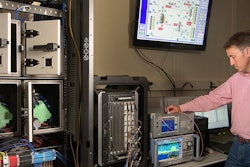Manufacturers that embrace the Internet of Things (IoT) experience tremendous benefits from the technology within. From enhanced productivity and improved worker safety to streamlined inventory management and quality control, there's a solution for nearly every niche imaginable.
One of these benefits, predictive maintenance, is often minimized when mentioned alongside the others, but it also means a lot for the future of manufacturing — including these five things.
Predicting and Preventing Hardware Failures
Like the IoT, big data has appropriate uses in nearly every industry and profession imaginable. It's also an invaluable resource in predictive maintenance.
Next-gen manufacturing equipment uses built-in sensors and sophisticated programming to perform predictive analytics and forecast potential issues before they happen. Not only does this minimize downtime, but data-driven predictive analytics remove the guesswork from any preventative maintenance strategies. It also lets engineers schedule and initiate repairs when the machine is offline and dormant.
General Motors (GM) uses advanced sensors to monitor factory temperatures before painting new cars on the production line. If the environment is too cold or too hot, the paint won't set correctly, and their equipment could fail or malfunction. Other manufacturers use automated notification sensors to identify drops in performance, unexpected bottlenecks or potential hazards.
Optimizing Maintenance Routines
Effective predictive maintenance helps to optimize and streamline maintenance routines in other ways, too. Predictive analytics often highlights machines or parts that require constant attention, which lets factory technicians adjust their stock of tools and spare parts as necessary. This saves even more time, money and space on the factory floor.
Some machines perform self-maintenance, too. This improves their efficiency even further by eliminating the need for technicians, but such advanced levels of automation have some human workers fearing for the security of their jobs.
Strengthening Workplace Safety
Predictive maintenance also has a direct impact on worker safety. Equipment that isn't properly maintained or machines that are prone to malfunction without warning pose a severe risk to the health and safety of manufacturing workers.
Such failures also wreak havoc on time, productivity and profitability. An unexpected occurrence like this might prompt the entire factory to shut down until the problem is resolved. It could even have consequences that aren't so obvious.
Enhancing Product Quality and Customer Service
Goods that are ready for shipment or distribution are prone to damage because of sudden machine breakdowns, too. If an assembly robot or CNC machine stops in the middle of production, those specific pieces — and the raw materials it comprises — are immediately wasted.
But the situation is even worse if a QA robot goes down. If they're not working correctly, these machines might fail to notice serious issues in workmanship. Apart from giving the customer a product of lesser quality, some defects could cause injury or, in extreme cases, death.
Caterpillar, known for their heavy-duty industrial and construction equipment, quickly embraced the IoT. As a result, their customers and partners enjoy many tangible benefits — including a 40 percent savings on fuel costs, a 90 percent equipment uptime and thousands of dollars in increased profitability.
It's a winning situation for everyone involved. Caterpillar advances their image, customers improve how they allocate their resources and consumers end up paying less for services overall.
Leveraging the IoT to Bolster Predictive Analytics
According to recent studies, the smart factory market will exceed $200 billion by 2022. Its growth is spurred on by innovations like the IoT, big data and predictive analytics, which are expected to propel levels of productivity and profitability to brand new heights.
It's a breakthrough that stands to benefit everyone, from manufacturers to consumers, and it's all coming to fruition over the next few years.
Those are just five ways predictive maintenance with IoT could change the manufacturing industry. After some time, even more advantages could be discovered.























